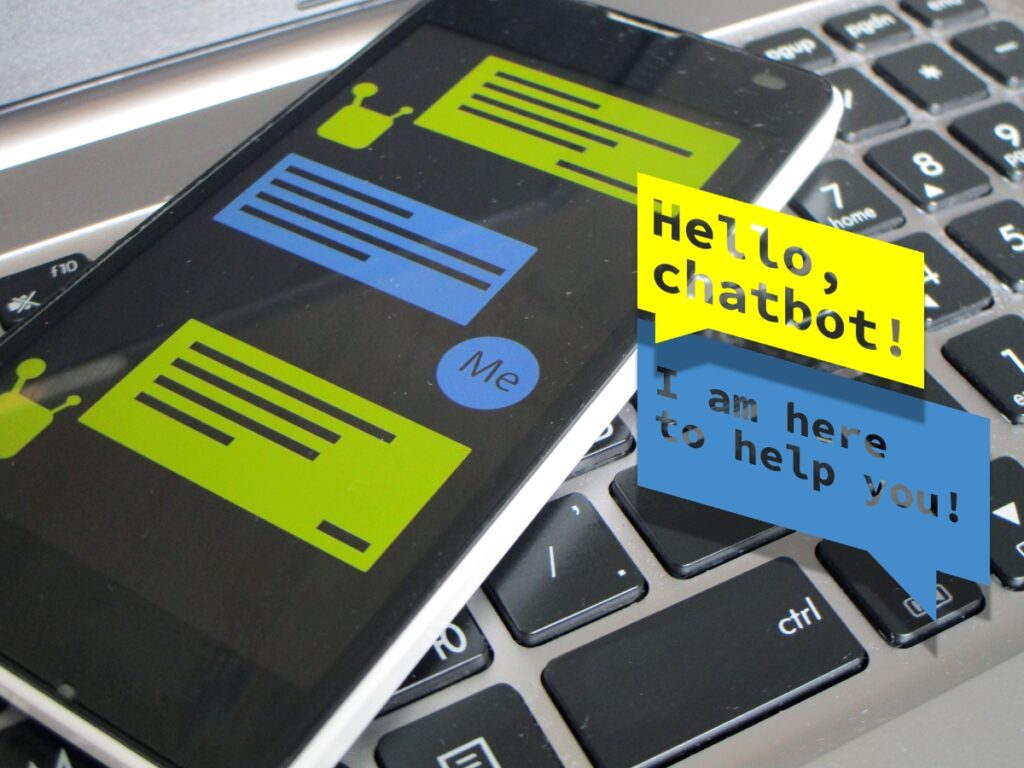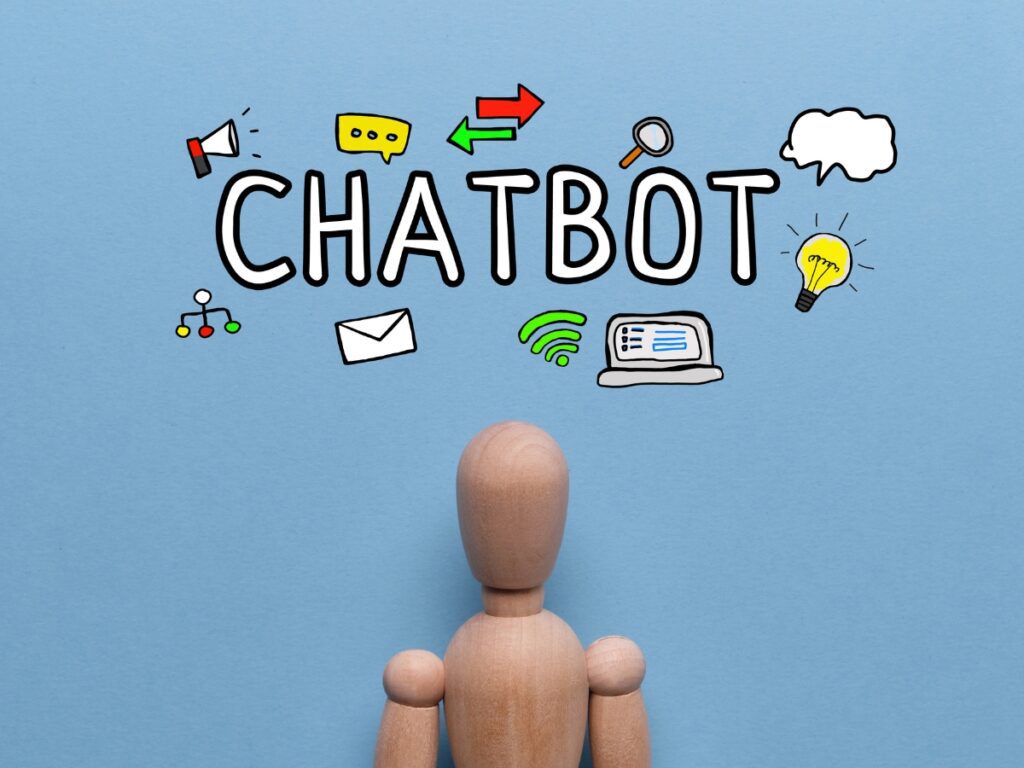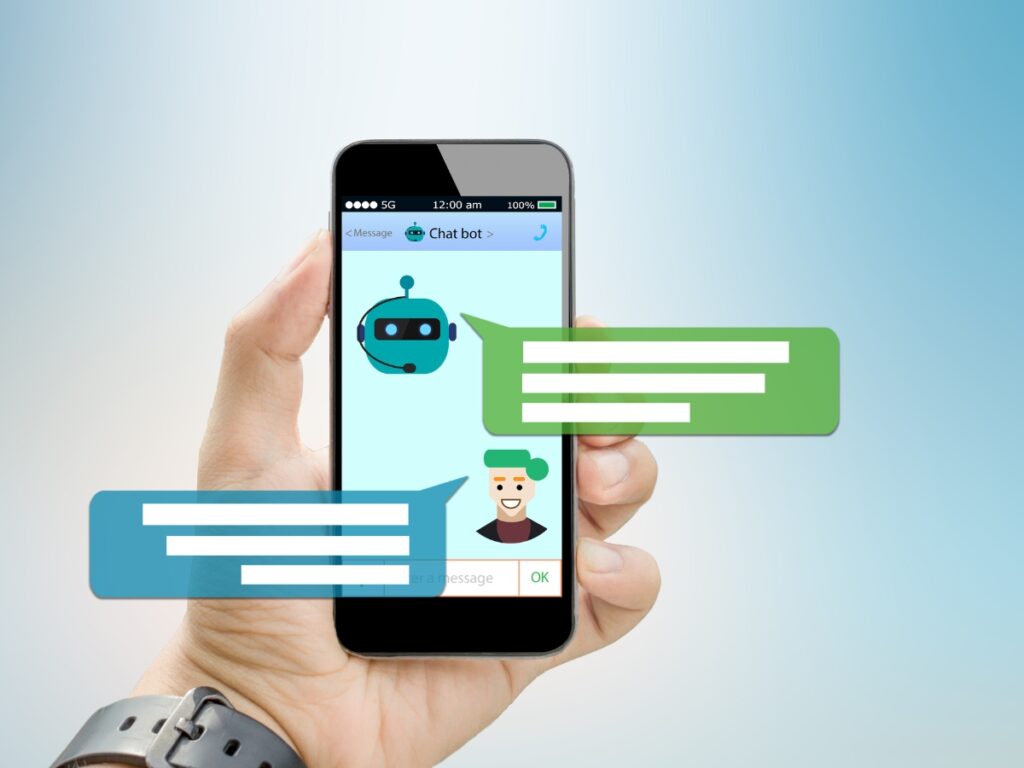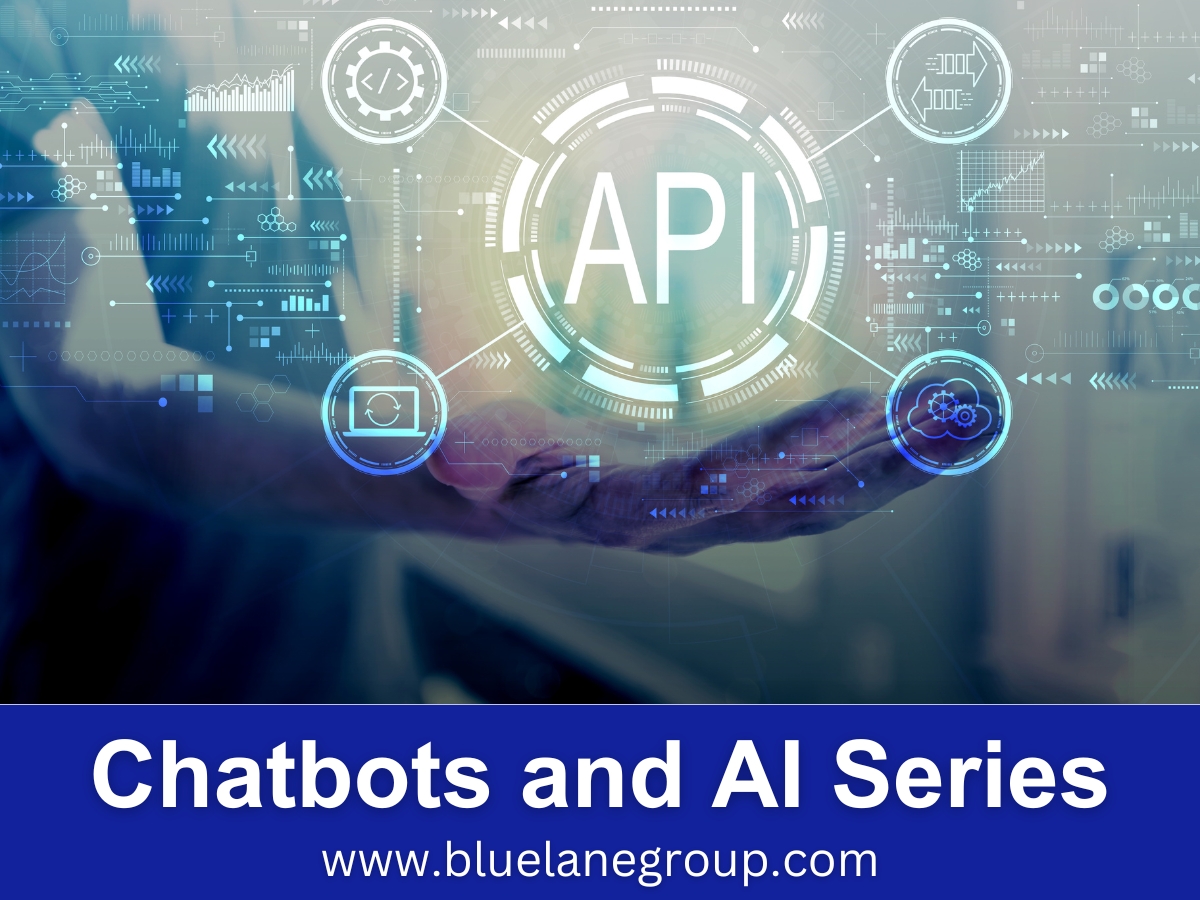This guide explores chatbot APIs, the unsung heroes that power and amplify the capabilities of modern chatbots. We’ll uncover their technical intricacies, role in expanding bot functionalities, and why they are indispensable for businesses striving for seamless integrations and elevated user experiences.
Quick Overview – For the Swift Scanners:
- Chatbot APIs, or Application Programming Interfaces, enable chatbots to communicate and integrate with other systems and databases. By harnessing these APIs, chatbots can access information, connect with third-party services, and enhance their functionality. From fetching real-time data to facilitating e-commerce transactions, chatbot APIs act as bridges, expanding the horizons of what chatbots can achieve.
- In the current technological landscape, chatbot APIs stand at the convergence of innovation and utility. They transform chatbots from mere conversational tools into powerful digital assistants capable of multitasking and personalized engagements. Embracing and understanding the nuances of chatbot APIs is crucial for businesses aiming for scalability, adaptability, and a holistic digital ecosystem.
Welcome to the seventh Blue Lane Group article in the Best Chatbots for Customer Service: Blueprint for Success in 2023 series. These posts examine the essential chatbot topics of customer service automation, exploring how chatbots revolutionize interactions, enhance user satisfaction, and redefine the benchmarks for excellence in modern customer-centric businesses.

Disclosure: The digital products mentioned in this article are highly regarded in the marketplace and are endorsed by the Blue Lane Group staff. We may earn a commission at no additional cost if you purchase through the provided links.
Table of Contents

Understanding Chatbot APIs: Basics and Beyond
In digital communication, chatbots have become the front-runners in enhancing user experiences.
At the heart of these advanced chatbots lie Chatbot APIs, pivotal components that amplify their functionality and ensure seamless interactions. But what exactly is a Chatbot API, and why is it such a cornerstone for effective bot operations?
What is a Chatbot API? Exploring the Key to Seamless Bot Functionality
A Chatbot API, or Application Programming Interface, is the intermediary that facilitates chatbots’ interactions with external services and databases.
So, when you’re inquiring about the latest sales on an e-commerce site or asking a digital assistant about the day’s weather, the API retrieves and delivers this data for the chatbot to relay to you.
Tools like Dialogflow API and IBM Watson Assistant API are leading examples, enabling bots to provide real-time, accurate responses.
The Journey: How Chatbot APIs Evolved Over Time
Chatbot APIs weren’t always as advanced as they are today. The early days saw rudimentary bots with limited functionalities. However, with the rise of AI and machine learning, APIs like Wit.ai API and Rasa API came into the limelight, offering natural language processing and a deeper understanding of user intent.
Over the years, the evolution of APIs has paralleled the increasing sophistication of chatbots, ensuring they remain relevant and effective in diverse contexts.

The Multifaceted Benefits of Chatbot APIs
There’s a myriad of advantages to utilizing chatbot APIs. Firstly, they offer the potential to elevate customer experience across platforms, from social media sites like Facebook, using the Facebook Messenger Platform API, to messaging apps like Telegram with the Telegram Bot API.
Secondly, APIs empower bots with advanced features and integrations, whether AI-driven language recognition or fetching real-time data. Tools like Microsoft Bot Framework API enable businesses to build bots that can swiftly handle many tasks, optimizing user engagement and operational efficiency.
Elevating Customer Experience across Diverse Platforms
Today’s digital landscape is vast, encompassing numerous platforms where customers engage with brands. Chatbot APIs are instrumental in ensuring these interactions are streamlined and satisfying. For instance, businesses can craft bots tailored for LINE users with the LINE Messaging API, while the Facebook Messenger Platform API enables engaging chatbot experiences on Facebook.
Whether it’s the quick-response nature of Telegram Bot API for Telegram users or the customization provided by Slack API for office communications, APIs make it possible to mold chatbots to the unique characteristics of each platform. This adaptability results in a more personalized user experience, resonating with audiences and ensuring they remain engaged.
Empowering Bots: How APIs Enable Advanced Features and Functionality
The API amplifies a chatbot’s prowess it’s integrated with. Chatbots can handle basic queries alone, but APIs like Wit.ai API equip them with human-like conversational abilities. Similarly, while bots can provide pre-set answers, APIs such as IBM Watson Assistant API allow them to fetch real-time data and generate contextual responses.
Developers harnessing Rasa API can dive deep into machine learning, enabling chatbots to learn from interactions and refine their answers over time. These APIs aren’t just add-ons; they’re essential tools that unlock the full potential of chatbots, transforming them from simple virtual assistants to advanced digital entities.

Boosting Productivity: The Symbiosis of Human Agents and Bots
Contrary to the notion that chatbots may replace human agents, the two can coexist productively, thanks to the capabilities of modern APIs. With Twilio Autopilot API, bots can handle initial queries, gathering necessary information before seamlessly transferring to a human agent when needed.
The Botsify API simplifies the integration of chatbots across platforms, ensuring agents have more time to tackle complex queries. Chatbots free up human agents by addressing repetitive and straightforward tasks, allowing them to focus on intricate issues and offer a personalized touch. This symbiotic relationship ensures operations are swift, efficient, and customer-centric.
Strengthening Brand Reputation with Consistent, Intelligent Responses
Consistency is critical in building brand trust. Imagine a scenario where customers receive varying answers for the same query – trust erodes quickly. Chatbot APIs help mitigate this by ensuring consistent, intelligent responses.
For instance, Chatfuel API emphasizes the rapid creation of chatbots that maintain a uniform voice across platforms like Facebook Messenger and Instagram.
Moreover, Microsoft Bot Framework API provides a comprehensive suite of tools, enabling bots to offer consistent information across diverse questions. When customers receive uniform, intelligent answers, their trust in the brand solidifies, enhancing the overall brand reputation.

The Underlying Technology and Mechanics of Chatbot APIs
Every efficient chatbot’s core lies in a sophisticated API seamlessly integrating varied technological components. These APIs, like Dialogflow API, leverage advanced algorithms and data structures to facilitate natural language understanding, enabling bots to comprehend user queries efficiently.
Wit.ai API specializes in this, focusing on natural language processing to decipher and respond to user inputs intelligently. Additionally, with the rise of omnichannel strategies, APIs like Twilio Autopilot API are designed to cater to voice and messaging bots, showcasing the breadth and depth of technologies involved in chatbot development and functioning.
Operational Insights: How Chatbot APIs Work Behind the Scenes
The API is at the heart of every chatbot interaction, silently working in the background. When a user sends a message, the chatbot forwards it to the API, like the IBM Watson Assistant API, which processes the data.
Depending on the complexity, it may tap into various databases, fetch required information, and run algorithms to determine the best response. In cases where NLP is crucial, APIs such as Dialogflow API decipher user intent, emotions, and context.
All these operations, though they happen in split seconds, are a testament to the robust architecture and intricate workflows that chatbot APIs encompass.
From Initial Messaging to Delivering Customized Responses
The chatbot journey, from receiving a user’s message to delivering a tailored reply, is a multi-step process streamlined by APIs. The initial letter is first analyzed for intent and context, a task perfected by the Wit.ai API.
Depending on the request, the chatbot may fetch real-time data from bots integrated with Microsoft Bot Framework API or refer to historical data for context. As the message gets processed, algorithms determine the optimal response, which might be a direct answer, a follow-up question, or a call to action.
Each step is facilitated by the chatbot API, ensuring the end response is accurate and personalized to the user’s needs.
Spotlight on Features: Integration, NLP, and Multi-platform Support
The versatility of chatbot APIs lies in their myriad features. Integration capabilities, like those offered by Slack API or Telegram Bot API, enable bots to work seamlessly across platforms. Natural Language Processing (NLP) is another standout feature, with platforms like Dialogflow API leading the charge in allowing bots to converse naturally.
Then, there’s multi-platform support, a boon for businesses with a presence on various digital platforms. For instance, the Facebook Messenger Platform API ensures that chatbots cater specifically to the Messenger audience.
Together, these features empower businesses to harness the full potential of chatbots, making them versatile, intelligent, and highly functional.

Overcoming Challenges in the World of Chatbot APIs
The landscape of chatbot APIs is ever-evolving, but with its growth come challenges that developers and businesses must tackle. From ensuring the security of data transmissions to maintaining smooth bot functionalities, the road can be daunting.
Solutions like the IBM Watson Assistant API prioritize data safety, while platforms such as Botsify API aim to simplify the creation process for diverse platforms. Moreover, as the demand for multilingual bots grows, APIs need to support a vast array of languages and regional nuances, a challenge met head-on by Dialogflow API.
Achieving Natural, Contextual Conversations: The Continuous Challenge
One of the most pressing challenges in the chatbot realm is enabling bots to engage in organic, human-like conversations. While APIs like Wit.ai API are making strides in harnessing Natural Language Processing, achieving conversational depth remains a work in progress.
Context is king in discussions, and chatbots must grasp not just the words but the emotions and intents behind them. Platforms like Rasa API emphasize machine learning to help bots evolve and improve with each interaction, gradually inching closer to that goal of genuine, contextual communication.
Tackling the Maze of Development, Integration, and Maintenance
The journey from conceptualizing a chatbot to its full-fledged operation is intricate. Developers face challenges in coding, integrating APIs like Microsoft Bot Framework API, and ensuring that the bot remains functional and updated.
Integration can be particularly tricky, given the myriad platforms and tools a bot may need to sync. Maintenance is another area that demands attention; with the digital landscape in constant flux, APIs like Chatfuel API offer solutions to keep bots aligned with the latest trends, security protocols, and user expectations.
Addressing the Nuances of Different Platforms and Ensuring API Compatibility
The digital ecosystem is brimming with diverse messaging platforms, each boasting unique functionalities and user interfaces. For businesses and developers, this means ensuring that chatbots function harmoniously across various environments.
Platforms like Telegram have specific user expectations, while Slack is tailored more for professional communication. Leveraging an API like the Slack API guarantees a bot tailored for professional collaboration. On the other hand, the Facebook Messenger Platform API ensures bots resonate with the social-centric Messenger audience.
Beyond the functional aspects, cultural and regional nuances also play a role. The key lies in choosing APIs that facilitate seamless integration and offer flexibility, allowing bots to be fine-tuned for each specific platform they inhabit.

Step-by-Step: Choosing, Implementing, and Perfecting Your Chatbot API
Implementing a chatbot API may seem daunting, but a systematic approach can simplify the process. Begin by clearly defining what you aim to achieve with your bot.
Is it to offer customer support, streamline sales, or facilitate team communication? With a clear goal, navigating options like the intuitive Dialogflow API or the feature-rich Microsoft Bot Framework API becomes more straightforward.
Assessing Needs and Picking the Right API for Your Business Objectives
Every business has unique requirements and customer demographics. It’s essential to analyze your audience, the platforms they frequent, and the interactions you aim to foster. For instance, the Telegram Bot API might be ideal for targeting a younger demographic on platforms like Telegram.
Conversely, a business-centric audience might benefit from bots tailored via the Slack API. Assessing these factors helps you choose an API that aligns with your objectives and maximizes user engagement.
The Development Journey: Design, Integration, and Optimization
Once you’ve chosen your ideal chatbot API, the next step is design and integration. In this phase, your bot’s personality, voice, and functionalities come to life. APIs like Rasa offer extensive tools for designing bots with depth and versatility.
Post-design integration involves embedding the bot into your chosen platforms, which might require leveraging specific tools like Chatfuel API for Facebook Messenger. Optimization is ongoing, driven by feedback and analytics. Platforms like Chatbase can refine and train bots, ensuring they evolve with user needs and preferences.
Lifelong Learning: Keeping Bots Updated and Relevant in a Changing Digital Landscape
The digital landscape is in perpetual flux. To ensure your bot remains relevant, continuous learning and adaptation are paramount. As platforms update their interfaces and functionalities, your bot needs to adjust.
This might mean updating its training using media like MonkeyLearn, ensuring its language remains fresh, or adapting to new platforms as they emerge. Embrace the dynamic nature of the digital world and ensure your bot does, too, to provide uninterrupted, top-tier user engagement.

Prominent Chatbot APIs: A Product Overview
Chatbot APIs have significantly transformed over the years, emerging as vital tools for businesses aiming to engage their audience more effectively.
IBM Watson Assistant API, renowned for its advanced chatbot functionalities, to Wit.ai API, which places a premium on natural language processing, for businesses focusing on specific messaging platforms, APIs like Facebook Messenger Platform API or Telegram Bot API offer tailored solutions, showcasing the diversity available in the market.
Summarizing the Features and Benefits of Leading Chatbot APIs
Every leading chatbot API brings a unique set of features and advantages to the table:
- Dialogflow API: Known for its natural language interfaces, it seamlessly integrates into apps and devices.
- Rasa API: An open-source platform that gives developers robust tools for AI chatbot creation and training.
- Slack API: Tailor-made for Slack environments, facilitating chatbots that enhance team communication.
- Twilio Autopilot API: Ideal for voice and messaging bots, it underscores the importance of omnichannel strategies.
- LINE Messaging API: Explicitly designed for LINE, it provides an interactive chatbot creation toolkit.
Each API caters to diverse business needs, enabling brands to deliver unparalleled user experiences.

Spotlight on 2023: 6 Leading Chatbot API Options to Revolutionize Your Business
2023 stands out as a year where chatbot APIs have genuinely emerged. Leading the charge are:
- IBM Watson Assistant API: Embracing machine learning for precise and advanced bot responses.
- Wit.ai API: Ensuring human-like conversational skills through focused natural language processing.
- Microsoft Bot Framework API: A comprehensive tool suite by Microsoft elevating bot development.
- Rasa API: Prioritizing in-depth AI chatbot training and development.
- Tars API: Facilitating backend support for chatbot creation and nuanced training.
- Botsify API: Simplifying chatbot creation across platforms, from Facebook Messenger to WordPress.
Each of these APIs offers innovations that promise to redefine how businesses engage with their audience.

FAQs: Addressing Common Queries on Chatbot APIs
As the digital world continually evolves, questions regarding chatbot APIs frequently surface. Many businesses grapple with the importance of these APIs, given their critical role in automating and personalizing user interactions.
Critical differentiators among top APIs include cutting-edge features, ease of integration, and consistent updates. For those selecting an API, it’s essential to consider the platform’s audience, integration capabilities, and desired functionalities.
By understanding these elements, companies can harness the power of chatbot APIs to optimize their digital strategies.
Why are Chatbot APIs Crucial for Modern Businesses?
In the digital age, businesses constantly seek ways to improve efficiency, customer experience, and scalability. Chatbot APIs are the backbone of this endeavor, serving as the bridge between chatbot platforms and the vast array of third-party applications and services.
By integrating these APIs, businesses can deliver personalized experiences, answer real-time customer queries, and automate routine tasks. This saves time and resources and ensures a consistent brand presence across various platforms.
For instance, the Slack API allows tailored chatbot experiences within its environment, enhancing team collaboration and productivity. Similarly, the Facebook Messenger Platform API empowers businesses to engage millions of users on a platform they frequent daily. Chatbot APIs are the catalysts driving the next phase of digital transformation for businesses.
What Sets Apart the Top Chatbot APIs from the Rest?
The realm of chatbot APIs is vast, with numerous options catering to different business needs. However, the top APIs, like Dialogflow API or IBM Watson Assistant API, stand out due to their advanced functionalities, robustness, and flexibility.
Their ability to integrate seamlessly across platforms, utilize state-of-the-art natural language processing, and provide scalable solutions distinguishes them. Moreover, these leading APIs often come with comprehensive documentation, dedicated support, and continuous updates, ensuring that businesses remain at the forefront of chatbot innovation.
For example, Wit.ai API empowers chatbots with human-like conversation skills, a crucial aspect that resonates with end-users. These features and a commitment to excellence make certain APIs shine brighter in the competitive landscape.

How to Determine the Right Chatbot API for My Needs?
Selecting the ideal chatbot API requires thoroughly understanding one’s business objectives and the desired functionalities. Identify the chatbot’s primary purpose: customer support, sales, or internal team assistance. Once that’s clear, delve into the technical aspects.
Consider whether the API integrates well with your existing systems or supports the platforms your audience frequents. For instance, the Telegram Bot API would be an apt choice for businesses targeting the Telegram user base.
Additionally, consider factors like scalability, ease of use, and cost. Exploring case studies or user reviews can also provide valuable insights.
Twilio Autopilot API might be a strong contender for businesses emphasizing voice interactions. Ultimately, aligning the chatbot API’s capabilities with business goals will pave the way for successful implementation and user engagement.

Conclusion: Looking Ahead at the Dynamic World of Chatbot APIs
As we peer into the horizon of the ever-evolving digital realm, it becomes clear that the significance of chatbot APIs will only magnify. As the nexus between advanced chatbot functionalities and diverse application ecosystems, these APIs are revolutionizing how businesses interact with their audiences.
Their unparalleled ability to offer personalized, intelligent, and instantaneous responses sets the stage for a future where human-computer interactions feel more organic than ever before.
Beyond operational efficiency, these APIs are becoming standard for delivering exceptional user experiences in e-commerce, healthcare, finance, or any other sector. Their adaptability ensures that businesses can remain agile and responsive regardless of technological advancements or shifts in user behavior.
Moreover, as artificial intelligence and machine learning continue to advance, the capabilities of chatbot APIs will reach unprecedented heights. This will empower even deeper integrations, more nuanced interactions, and an understanding of user intent that seems almost prophetic.
In this dynamic world, businesses must remain vigilant, continuously updating and optimizing their chatbot strategies. Those who harness the full potential of chatbot APIs will undoubtedly lead the charge in this new era of digital communication, setting benchmarks for user engagement and operational excellence.
As we look ahead, the fusion of technology and human-centric design heralds a promising future, with chatbot APIs at its core.

You Might Also Like
If you enjoyed this article and received value from it, check out the other Blue Lane Group articles in the Best Chatbots for Customer Service: Blueprint for Success in 2023 series:
- Chatbot ROI: Unlock Unmatched Profits with Top 5 Strategies for Optimization
- Omnichannel Chatbots: Unlock Consistent Engagement with 7 Best Practices
- Chatbot KPIs: 10 Essential Metrics to Drive Optimal Results
- Multilingual Chatbots: Break Language Barriers with 8 Leading Solutions
- Enterprise AI Chatbot Solutions: 7 Key Tools to Supercharge Your Business
- Mastering Chatbot Training: 7 Strategies for Optimal User Engagement
- Chatbot APIs: 6 Leading Options for Seamless Functionality
- Chatbot Scripts: 9 Proven Strategies to Boost Conversions and Engagement
- Rule-Based Chatbots: Drive Consistent Responses with Top 9 Benefits
- Chatbot Success Metrics: Unlock Optimal Performance with Top 10 Insights
- Chatbot Analytics: Drive Excellence with 10 Essential Tools
- Mastering Interactivity: Top 10 Chatbot Frameworks Explored
- Chatbots in Retail: 7 Winning Strategies for Elevated Customer Engagement
- Chatbots for Lead Generation: 6 Best Practices to Transform Your Funnel
- Chatbot Integrations: 6 Essentials for Enhanced Productivity and Operations
- Chatbot UX: Enhance Engagement with These 8 Vital Principles
- Chatbot Security: 7 Essentials to Safeguard Your Business
- Chatbot Development Services: 7 Must-Knows to Boost Your ROI
- Chatbots in Healthcare: 6 Leading Innovations Revolutionizing Patient Care
- NLP for Chatbots: Top 6 Techniques Transforming Chat Experiences
- Benefits of Chatbots in Customer Service: 7 Key Sales Boosters
- 7 Essential Social Media Chatbots for Unmatched Engagement
- Building Chatbots Powered by AI: 5 Proven Techniques for Epic Profits





